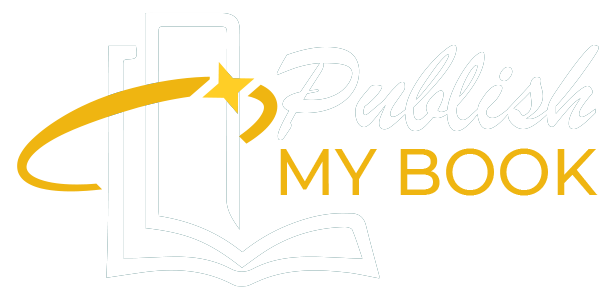
The digital world is evolving at lightning speed, and if you’re an eBook publisher, self-publisher, or even a book publisher trying to stay ahead of the curve. Gone are the days when selling a copy was the only route to revenue. Now, there’s a quiet revolution brewing in the form of CPM ebooks and it’s shaking up the game for both publishers and advertisers alike. Imagine this: you’re a self-publishing author who’s poured time, soul, and caffeine into writing an eBook.
Traditionally, you’d upload your work, set a price, cross your fingers, and wait for sales. But what if your book could generate income even when it’s free to download? Incorporate CPM (Cost Per Mille) advertising into your eBook to promote a model that pays per thousand ad impressions. This model is not just transforming how authors earn, but also how advertisers reach niche audiences in a deeper, more immersive way. Readers aren’t just seeing ads, they’re engaging with them in a context that feels personal, curated, and relevant.
For content creators, that means more freedom to distribute their books widely, and for advertisers, it opens the door to incredibly targeted visibility. Whether you’re a seasoned book publisher, an indie self-publisher, or an advertiser hungry for meaningful reach, CPM eBooks are rewriting the rules of the digital publishing economy and this might just be your cue to turn the page.
The Rise of CPM eBooks: More Than Just Ads
The concept of embedding ads in eBooks isn’t entirely new but CPM eBooks have taken it to a whole new level. By integrating subtle, non-intrusive ads that appear every few pages or in natural breaks (like chapter transitions), publishers and authors are tapping into a continuous revenue stream that works regardless of sales volume. This model is particularly appealing to self-publishers, who often face challenges breaking through the noise in online marketplaces. With CPM advertising, even free eBooks can earn real money, incentivizing authors to distribute their work far and wide without the barrier of a price tag. On the flip side, advertisers are loving this shift. People spend hours reading a book they’re invested in. That means ads placed within eBooks have a higher chance of being seen, remembered, and acted upon. It’s a win-win dynamic that’s quickly gaining traction.
Why This Matters to eBook Publishers and Self Publishers
For many eBook publishers and self-publishers, monetization has always been a game of strategy. Traditional revenue models rely heavily on pricing, royalties, and platforms like Amazon. But CPM eBooks break this mold. Now, instead of choosing between giving away your book for exposure or charging for limited reach, you can do both: maximize your audience AND monetize your work. This hybrid approach makes your eBook a long-term income generator rather than a one-time sale. Self-publishers, in particular, benefit from this flexibility. You’re no longer solely dependent on your marketing budget or the mercy of an algorithm. If your book resonates and is shared, your reach and revenue can grow organically.
A Goldmine for Advertisers: Niche Meets Narrative
From an advertiser’s perspective, the appeal of CPM ebooks is laser-focused targeting. A travel gear company advertising in a backpacking memoir, or a financial service ad appearing in a personal finance guide these aren’t just random placements. They’re hyper-relevant ads embedded in content readers actually care about. Unlike traditional web ads that are often scrolled past or blocked, ads in CPM eBooks feel more like curated recommendations than interruptions. Advertisers are also taking advantage of creative ad formats, interactive widgets, embedded videos (for enhanced eBooks), and dynamic links that allow real-time tracking and A/B testing. This means CPM advertising in eBooks isn’t static; it’s smart, scalable, and surprisingly sophisticated.
CPM eBooks and the Democratization of Publishing
Perhaps the most exciting part of this trend is how it levels the playing field. No longer do you need a big-name book publisher behind you to make a living from your writing. Self publishing used to be a tough road with low visibility, minimal support, and uncertain earnings. But CPM eBooks are helping change that narrative. Authors can now focus on quality content and authentic storytelling, knowing that their work can generate passive income over time. Meanwhile, small publishers can compete with larger firms by offering innovative ad packages to advertisers looking to reach highly engaged, niche audiences. It’s a shift that empowers creators and invites advertisers to think beyond the banner.
Challenges and Considerations
Of course, it’s not all smooth sailing. For CPM eBooks to succeed, the ad experience must be tasteful and respectful of the reader’s journey. Overloading a Book Illustration
with ads will backfire, just as it has with websites. Publishers also need to ensure transparency with readers, letting them know that ads support the free content they’re enjoying. Additionally, for authors who dream of seeing their books in print, CPM eBooks may not align with their long-term goals. But for digital-first creators and modern marketers, it’s a compelling path worth exploring.
The Future of CPM eBooks
The integration of AI and data analytics into eBooks is likely to push CPM models even further. We could also see more platforms emerging to support CPM eBook creation, allowing self-publishers and eBook publishers to easily manage ad inventory, performance tracking, and revenue distribution. For advertisers, it means smarter targeting. For readers, it means richer, potentially free content. Additionally, it signifies freedom for writers: the ability to write, distribute, and make money without hindrance.
In the end,whether you’re a seasoned book publisher, a scrappy self-publisher, or a brand looking for meaningful reach, CPM ebooks offer a refreshing new perspective. They transform eBooks from simple products into powerful platforms for content, connection, and commerce. This isn’t just a trend, it’s a movement. One that blends storytelling with smart monetization, opens new doors for advertisers, and gives publishers the tools to thrive in an increasingly crowded digital space. The publishing world is turning a new page. The question is: will you be part of the next chapter?
